Time:2025-07-17
The Strategic Role of Neon in Restaurant Design
In the competitive landscape of dining, custom neon signs for restaurants have evolved beyond mere signage to become integral elements of brand storytelling and customer experience. These illuminated installations blend artistry with functionality, transforming spaces into memorable environments that reflect a restaurant’s personality—whether it’s the retro charm of a diner, the sleek sophistication of a sushi bar, or the vibrant energy of a taco joint. By combining customizable typography, color psychology, and strategic placement, neon signs guide patrons, highlight key areas, and reinforce brand identity, all while creating an emotional connection that encourages repeat visits. This article explores the technical considerations, design strategies, and practical applications of custom neon signs in restaurant settings, offering insights for chefs, restaurateurs, and designers aiming to elevate their dining spaces.
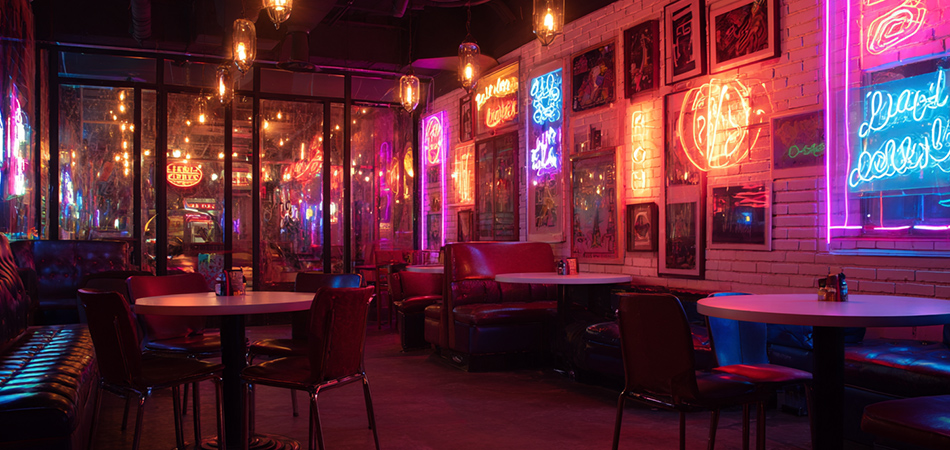
Technical Foundations: Choosing the Right Neon for Restaurant Environments
LED Neon Flex: The Modern Workhorse
Durability and Safety: Encased in food-grade silicone or PVC, LED neon flex resists moisture, heat, and impact—critical for busy kitchens, bar areas, and high-traffic dining rooms. Its low-voltage operation (12V/24V DC) eliminates fire risks near cooking equipment or alcohol stations.
Energy Efficiency: Consumes 70-80% less power than traditional neon, reducing operational costs for restaurants with extended hours. Long lifespans (50,000+ hours) minimize maintenance disruptions during peak service times.
Design Versatility: Bendable to tight radii (15-30mm), allowing intricate shapes like utensils, food icons, or custom logos. RGB capabilities enable dynamic color changes, ideal for theme nights or seasonal promotions.
Traditional Glass Neon: Authentic Nostalgia
Vintage Aesthetic: For retro diners, speakeasies, or heritage brands, glass neon’s warm, diffused glow evokes mid-century charm. Artisanal bending creates smooth curves and classic typography that resonate with nostalgia-driven diners.
Considerations for Restaurants: Fragile and heat-generating, glass neon requires protective casings and strategic placement away from busy walkways or kitchen splatters. It works best in low-traffic areas like lounge walls or entry foyers.
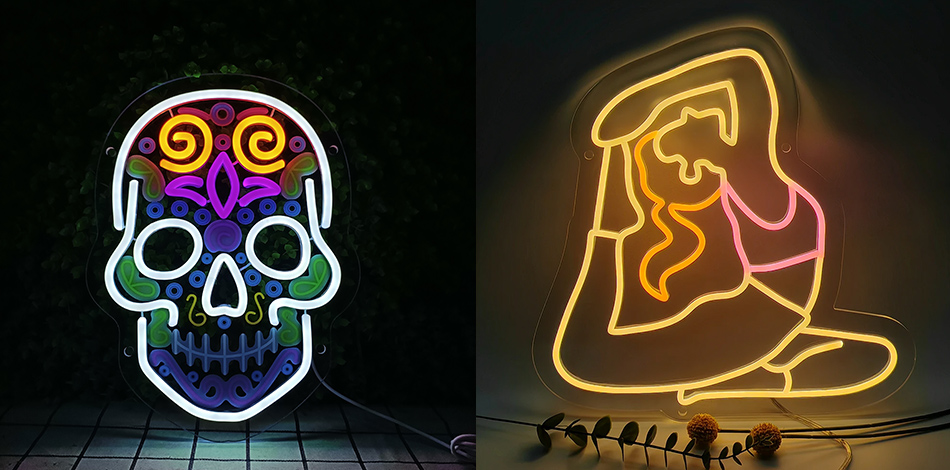
Design Principles for Restaurant Neon Signs
Aligning Neon with Brand Identity
Cuisine and Concept Alignment:
Retro Diners: Bold red or yellow glass neon in script fonts (e.g., “DINER” or “MILKSHAKES”) paired with vintage imagery (hamburgers, soda fountains) reinforces 1950s nostalgia.
Fine Dining: Subtle white or gold LED neon in minimalist sans-serif fonts (e.g., the restaurant’s name in thin lines) complements upscale decor without overwhelming the space.
Ethnic Eateries: Cultural symbols (e.g., pagodas for Asian restaurants, sombreros for Mexican spots) rendered in neon, using colors tied to regional traditions (red and gold for Chinese cuisine, green and white for Italian).
Color Psychology in Dining:
Appetite Stimulants: Warm hues (red, orange, yellow) increase heart rate and hunger cues, making them ideal for fast-casual spots or steak houses.
Relaxation Inducers: Cool tones (blue, green, soft purple) create calm, suited for cafes, spas, or upscale seafood restaurants where leisurely dining is emphasized.
Spatial Integration and Functionality
Wayfinding and Zoning:
Entry Signage: Large-scale neon logos or “OPEN” signs visible from the street, using high-contrast colors to attract passing foot traffic.
Interior Navigation: Neon arrows or text directing patrons to “BAR,” “OUTDOOR SEATING,” or “RESTROOMS,” with brightness adjusted to avoid glare during evening service.
Focal Points: Oversized neon installations above bars or open kitchens, turning functional areas into visual spectacles (e.g., a neon “GRILL” sign overlooking a wood-fired oven).
Scale and Proportion:
Intimate Spaces: Smaller neon accents (e.g., “COFFEE” above a counter) in cafes or wine bars, using dimmed lighting to maintain coziness.
Large Venues: Bold, multi-panel neon murals (e.g., city skylines for rooftop bars) that fill empty walls and create Instagram-worthy backdrops.
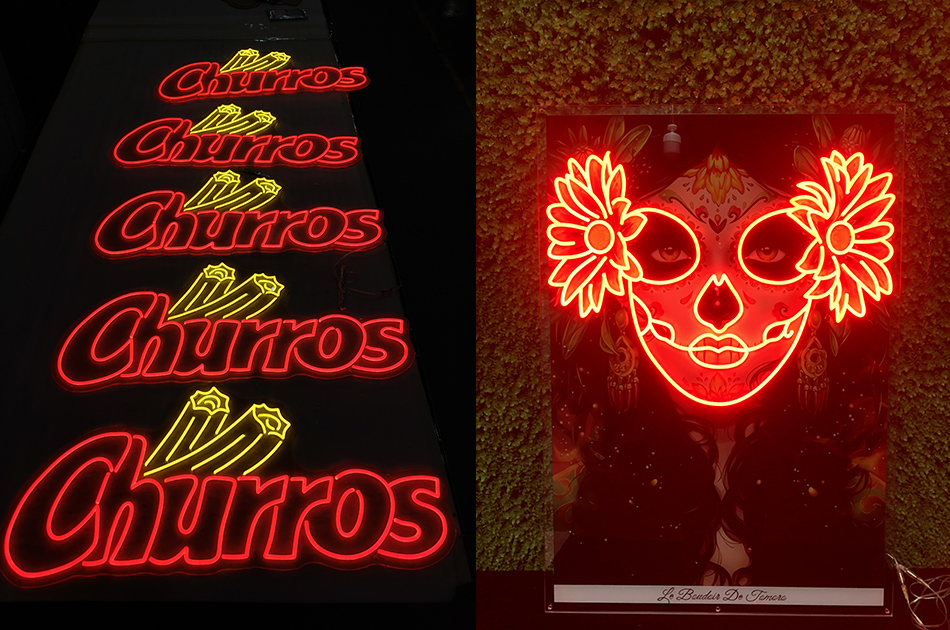
Applications Across Restaurant Zones
Exterior and Entryway Signage
Storefront Identity: A burger joint might feature a 3D neon burger logo with “BURGERS” in red LED neon, mounted above the entrance to signal its cuisine at a glance. Coastal seafood restaurants often use blue neon waves or fish icons to reinforce their theme.
Outdoor Patios: Weather-resistant LED neon signs (IP65-rated) outlining patio perimeters or spelling “PATIO” in warm white, extending brand visibility to al fresco diners and passersby.
Bar and Counter Areas
Bar Branding: Neon lettering spelling the bar’s name (e.g., “THE LOCAL”) behind the counter, paired with neon bottle outlines or cocktail icons (martinis, margaritas) to highlight signature drinks.
Order Points: Fast-casual chains use neon to mark “ORDER HERE” or “PICKUP” zones, with flashing elements (e.g., a blinking arrow) to guide busy customers efficiently.
Dining Room and Lounge Spaces
Wall Art Installations: A vegan restaurant might display a neon “PLANT POWER” sign surrounded by leaf motifs, reinforcing its mission while adding visual interest. Steakhouses often use neon cow skulls or grill symbols to align with their menu.
Private Dining Nooks: Smaller neon signs (e.g., “BOOTH 5” or “PRIVATE”) in soft hues, creating intimacy while maintaining brand consistency.
Kitchen and Back-of-House
Safety and Efficiency: Neon signs indicating “FIRE EXIT” or “CLEAR PATH” in bright red, ensuring visibility in dimly lit prep areas. LED neon’s low heat output makes it safe near flammable ingredients.
Staff Zones: “KITCHEN” or “STAFF ONLY” signs in durable silicone casings, resistant to grease and easy to wipe clean—critical for maintaining hygiene standards.
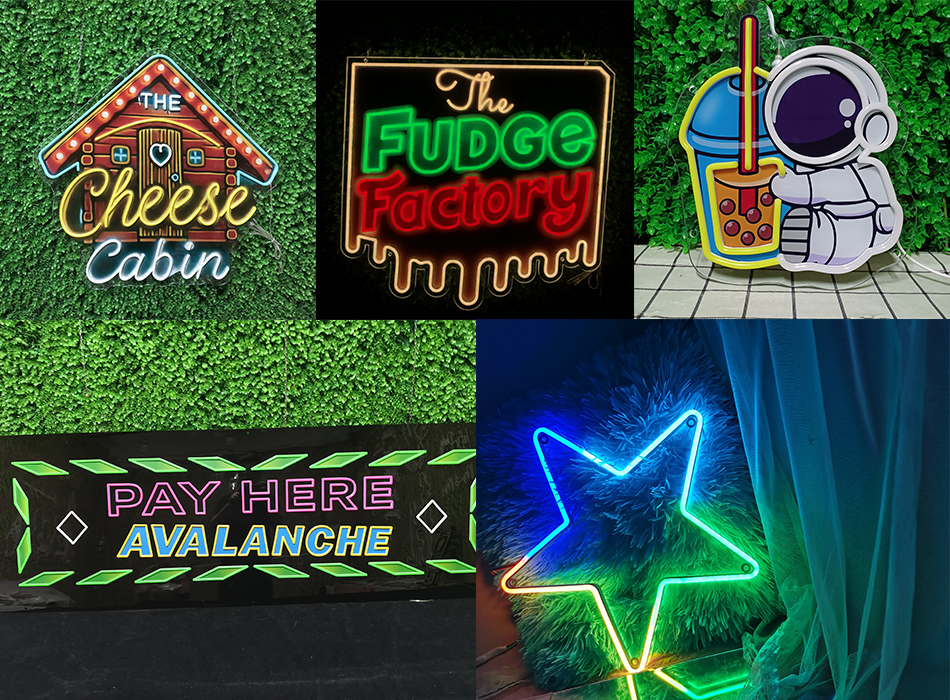
Installation and Maintenance in Restaurant Environments
Strategic Installation Considerations
Heat and Grease Resistance: In kitchen-adjacent areas, use silicone-encased LED neon with high-temperature ratings (up to 60°C) to withstand steam and cooking heat. Mount signs at least 1 meter away from grills or fryers.
Electrical Safety: Hire certified electricians to install hardwired neon systems, ensuring compliance with commercial kitchen codes (e.g., GFCI protection for wet areas like dishwashing stations). Battery-powered options work for temporary pop-ups or rental spaces.
Viewing Angles: Position entry signs to be visible from 50+ meters, while interior signs should align with eye level (1.5–2 meters) for seated diners. Avoid glare on windows or reflective surfaces that could obscure visibility.
Maintenance for Longevity
Regular Cleaning:
Kitchen Areas: Wipe silicone casings with degreasing agents (avoiding harsh chemicals that degrade materials) to remove oil buildup.
Dining Rooms: Dust glass neon tubes with microfiber cloths; use mild soap for LED neon casings to preserve color vibrancy.
Preventative Checks:
Inspect wiring quarterly for signs near water sources (e.g., bars, sinks) to prevent corrosion.
Test LED controllers monthly to ensure color consistency, especially for dynamic signs used in promotions.
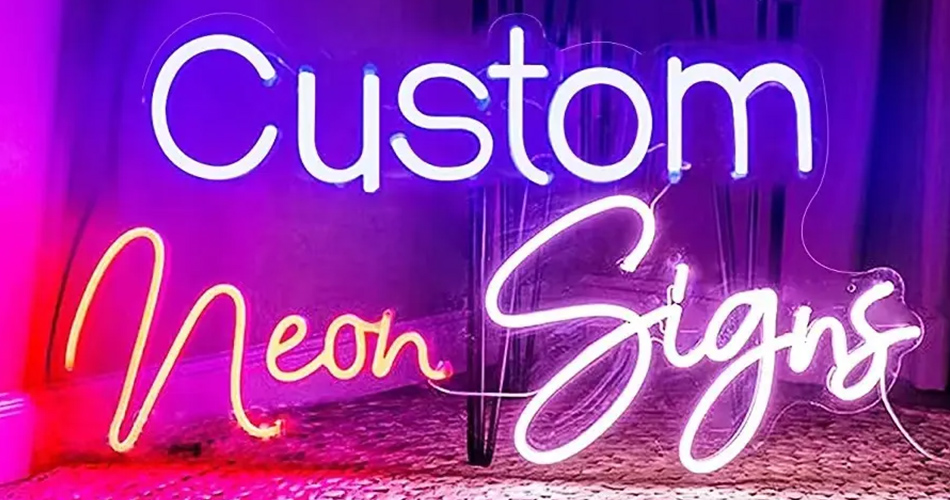
Choosing a Custom Neon Provider for Restaurants
Experience in Hospitality Projects
Portfolio Review: Prioritize providers with case studies in restaurant design, showcasing their ability to balance aesthetics with durability. Look for examples of neon integrated into diverse cuisines and themes.
Material Expertise: Verify knowledge of food-safe materials (e.g., FDA-approved silicone) and compliance with health codes, critical for signs in food preparation areas.
Customization Capabilities
3D Mockups: Request digital renderings of neon signs in your restaurant’s layout to test scale, color, and placement before production. This avoids costly revisions post-installation.
Flexible Production: Choose providers who can accommodate rush orders for seasonal events (e.g., holiday neon displays) or last-minute menu changes highlighted in signage.
Cost and ROI Considerations
Lifespan vs. Budget: While LED neon has higher upfront costs than traditional signage, its 5+ year lifespan and energy savings offer better long-term ROI for restaurants with steady operations.
Warranty Coverage: Seek 2–3 year warranties on neon components, with clear terms for replacing damaged LEDs or casings—essential for high-traffic dining environments.
Trends in Restaurant Neon Design
Interactive and Dynamic Elements
Motion Sensors: Neon signs that brighten when diners approach (e.g., “SPECIALS” boards near entrances) or change color with music in nightlife venues.
QR Code Integration: Neon outlines of QR codes linking to menus or social media, blending retro aesthetics with modern convenience.
Sustainable Neon Solutions
Solar-Powered Exteriors: Restaurants with outdoor patios use solar panels to power LED neon signs, reducing grid reliance and aligning with eco-friendly branding.
Recycled Materials: Backings made from reclaimed wood or recycled metal, paired with energy-efficient LEDs, appeal to sustainability-focused diners.
Minimalist and Typography-Driven Designs
Single-Word Statements: Bold neon words like “EAT,” “DRINK,” or “RELAX” in large fonts, creating impactful focal points without cluttering small spaces.
Negative Space Techniques: Neon outlines of utensils or food shapes (e.g., a fork and knife) with empty centers, adding sophistication to minimalist interiors.
Overcoming Restaurant-Specific Challenges
Challenge 1: Grease Buildup in Kitchen Zones
Solution: Use smooth, non-porous silicone casings that repel oil, paired with removable mounting brackets for easy deep cleaning.
Challenge 2: Noise-Induced Vibrations
Solution: Secure neon signs with shock-absorbing mounts in busy areas (e.g., near dishwashers or loud music), preventing loosening of components over time.
Challenge 3: Brand Consistency Across Multiple Locations
Solution: Work with providers to create standardized neon templates (same font, color, dimensions) that maintain brand identity while allowing minor customizations for local themes.
Conclusion: Neon as a Catalyst for Dining Experiences
Custom neon signs for restaurants are more than decorative elements—they are powerful tools that shape how patrons perceive, interact with, and remember a dining space. By merging technical durability with creative design, these signs reinforce brand stories, guide customer journeys, and transform ordinary meals into memorable occasions.
As restaurants compete to differentiate themselves in crowded markets, investing in thoughtfully designed neon signage offers a tangible way to stand out. Whether through retro glass neon evoking nostalgia or cutting-edge LED displays signaling innovation, the right neon sign becomes an integral part of the dining experience—illuminating not just the space, but the very essence of what makes a restaurant unique.